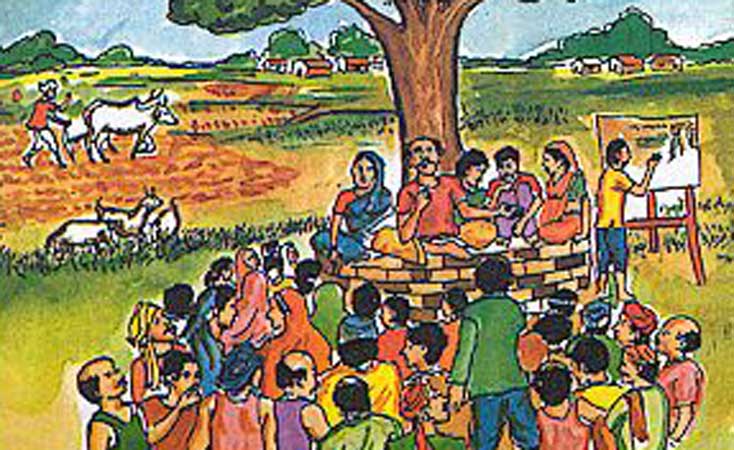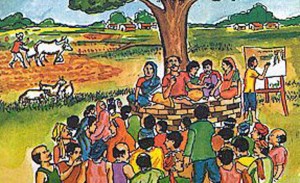The panchyati raj system is one of the oldest system of local government in Indian subcontinent. The word “panchyat” literally means assembly(ayat)
of five (panch) wise and respected elders chosen and accepted by the local community. However there are different type of assemblies, which traditionally settled disputes between the villagers.
but the form of the panchyat that we see now has not always been like this ,it has made in its way through various measures. During the British rule ,the British’s were not interested in developing grass root governance as the wished only to control local bodies which could help them in their trading interest and help them in their trading interest by collecting taxes. During their regime the introduction of patvari, creation of office of magistrate and abolition of village policing led to the complete disempowerment of the village community and destroyed the panchyat.
however after 1857 the British tried to restore the power of the Panchyat by giving it power to try minor village offences, but the real benchmarking of the government policy on decentralization of the govt can be attributed to Lord Ripon who in his famous resolution on local self govt on may 18, 1882 recognized the twin consideration of
- Administrative efficiencies
- political education
followed by The royal commission on decentralization (1907),then The provincial autonomy under the govt of India Act ,1935, marked the evolution of the panchyat in India
The Indian national congress from the 1920’s to 1947, emphasized the issue of all-India Swaraj and organized movements for independence under the leadership of Mahatma Gandhi. the task of preparing any sort of blue print for local level was neglected as a result .There was no consensus among the top leaders regarding the status and the role to be assigned to the institution local-self government which again led to the suppression of the local bodies .
The real development of the panchyati raj system has happened after independence when it was realized that the country needed a decentralized form of govt active on its toes with local bodies totally self sufficient to heed to its needs.
The major steps to aid this development was The Balwant Rai Mehta committee (1957) which studies the local govt ,the community development project and national extension service and gave some very structural recommendation’s
- the election of local bodies
- the division of localities into blocks
- free from govt constrains and self sufficient
- its function covering the development of agriculture in all its aspects, promotion of local industries and others
- the higher level being the zila parishad
the PRI did not achieve as momentum as thought , thus a higher committee was set up to strengthen the system, Tin suggested some the Ashok Mehta committee (1997) which again suggested some steps
- the 3-tire system replaced by 2-tire system
- district be the first point of decentralization
- zila parisad should be executive body
- official participation of political parties at all levels
- and many more in minor details
These recommendation were considered in some cases and denied in some leading to the present form where there is functioning local self govt at every level and regular elections.





9 Comments. Leave new
Good effort!
The blog is indeed very informative and lets us know about the basics, which many ignore. Panchayat, being a crucial part of the Indian administration system has shaped n number of then rural and now urban areas. Great piece of work 🙂
Quite an interesting one !
Interesting..!
It is sad to hear that British didn’t do much to develop village governance. I think it would have indirectly helped them to control various small peasant revolutions during early 20th century.
Very well done… quite informative article..
Well Researched one 😀
GOod work 😀
A very important tier of the Indian federation
nice work